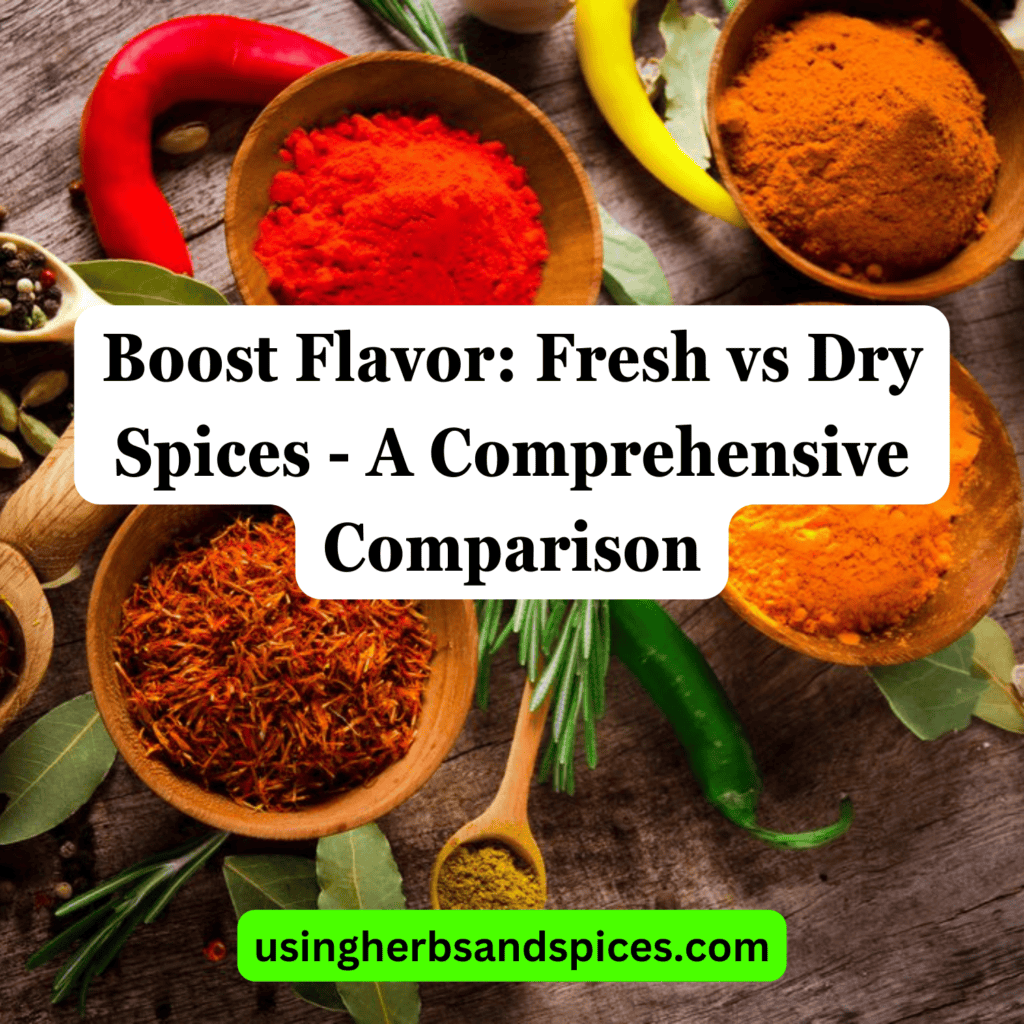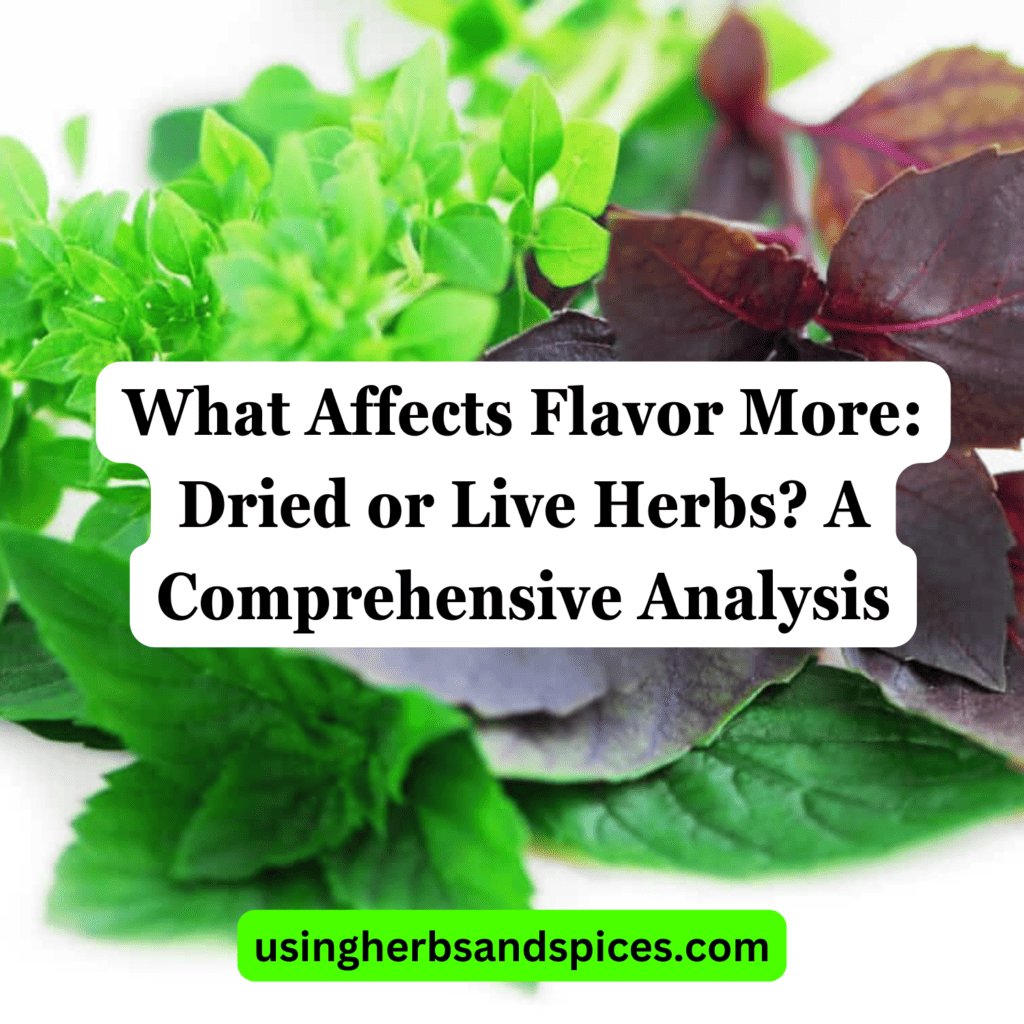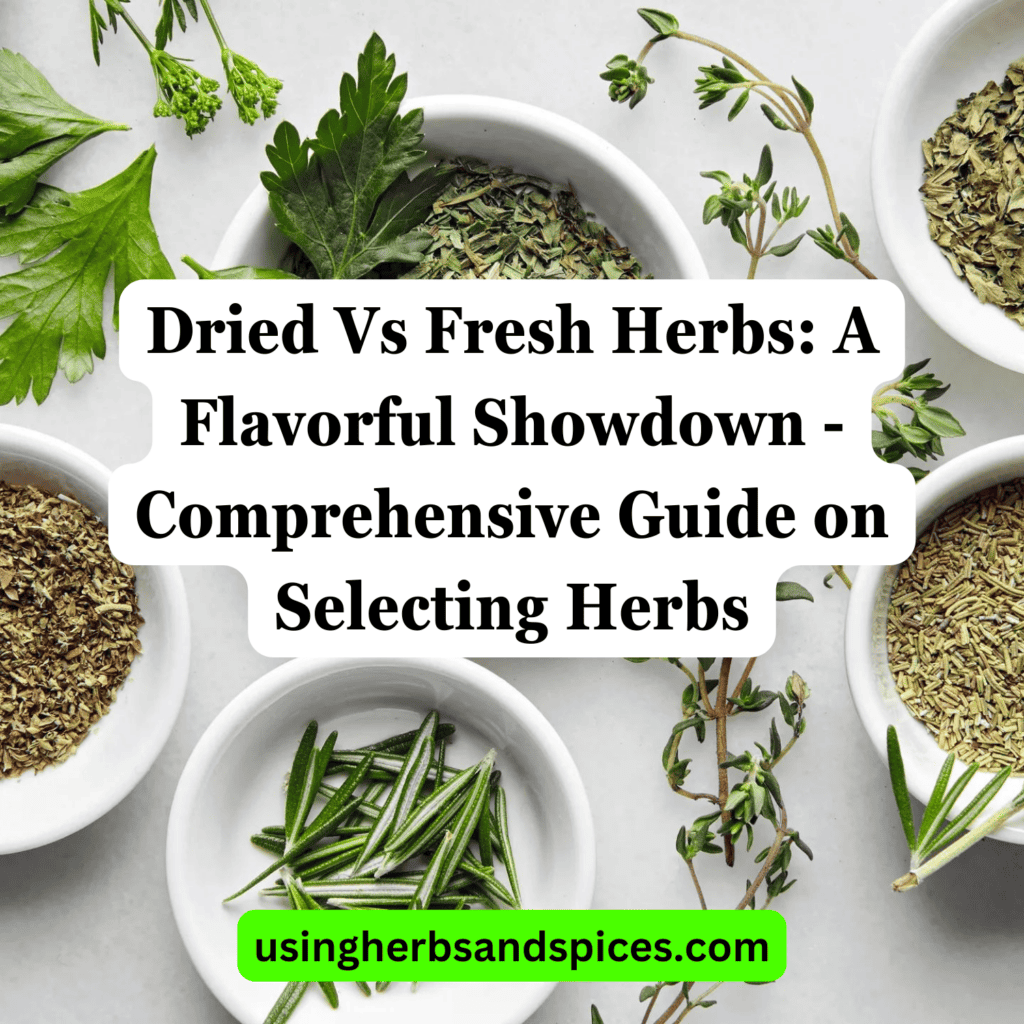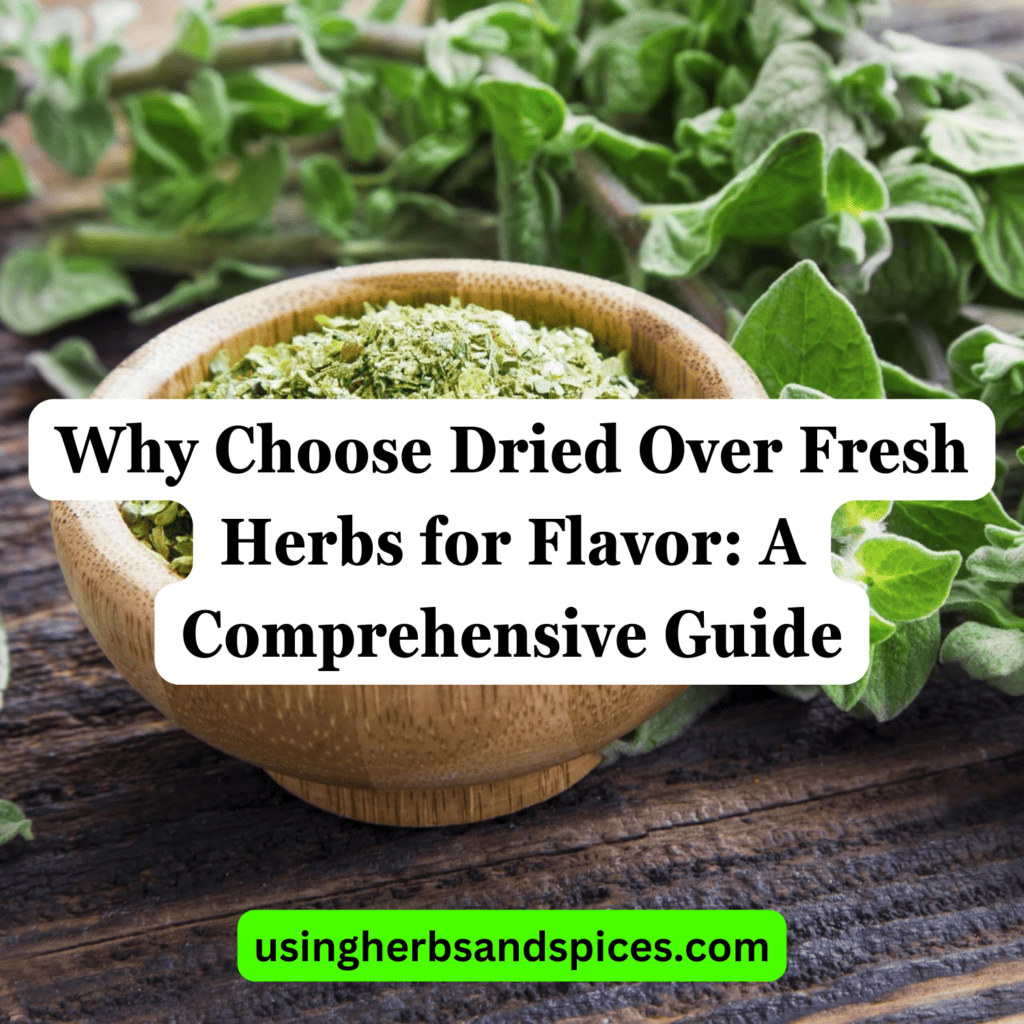SUMMARY: Your spice rack’s secret is that both dry and fresh herbs have their own times to shine in the kitchen, with dry herbs not keeping their punch forever and fresh ones offering bright flavors and nutrients. Knowing how to store and balance them can boost your cooking from good to great.
Ever wondered why dishes sometimes lack the punch, even when you’ve followed the recipe to a T?
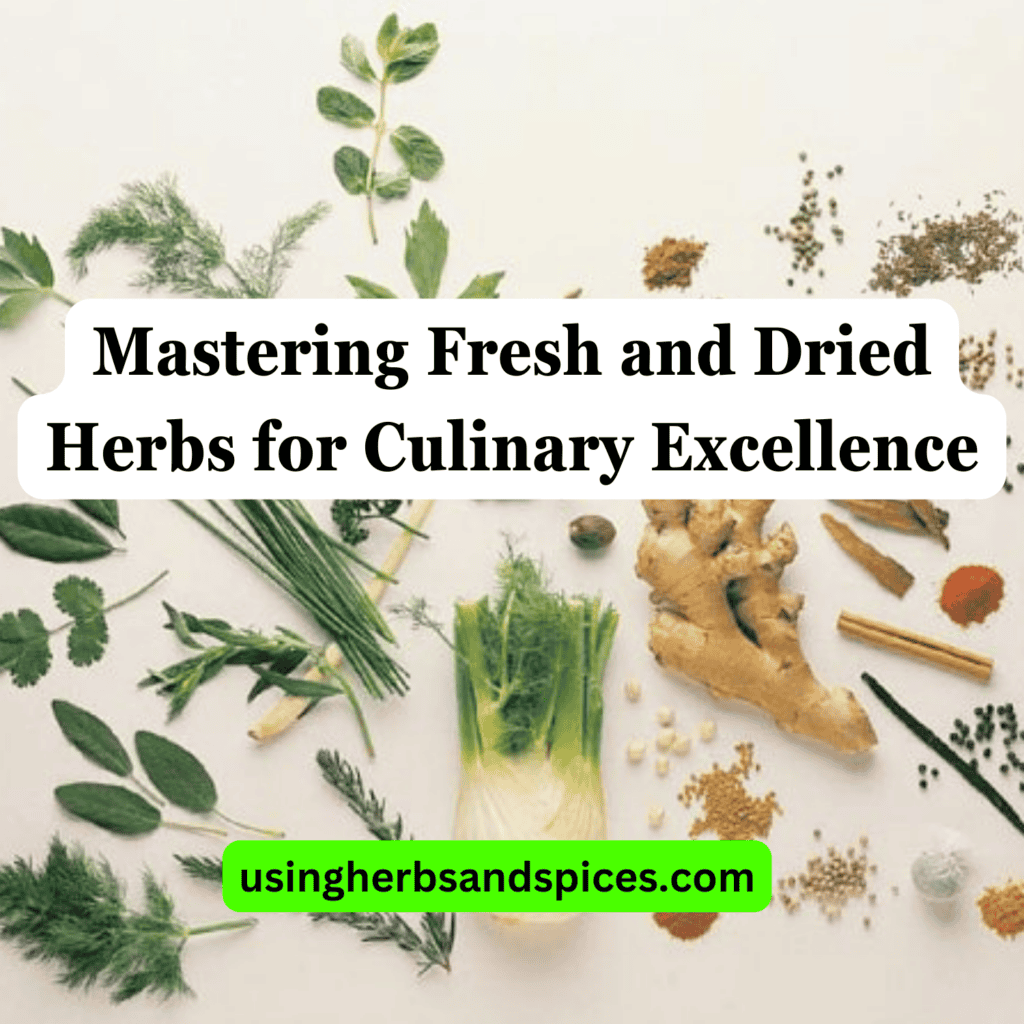
This could be a tale of your spice rack not being as truthful as you think.
- The truth behind the shelf life and true flavor of dry herbs.
- Understanding the vibrant world of fresh herbs and their optimal culinary uses.
- Strategies for flawlessly combining fresh and dry herbs in your cooking.
- Detecting mislabeling and quality issues in your herb supply.
Keep reading to unveil the secrets of your spice rack and how to harness the full potential of herbs in your culinary endeavors.
Understanding Dry Herbs: Shelf Life and Flavor
Dry herbs are a staple in kitchens worldwide, revered for their convenience and longevity. But while they can last much longer than their fresh counterparts, they certainly don’t hold their flavor forever. The common myth surrounding dry herbs is that they are almost immortal on your shelf, ready to deliver the same taste year after year. Unfortunately, this is far from the truth.
The reality is that dry herbs start losing their potency as soon as they are processed and packaged. Factors such as light, heat, and humidity can accelerate this process, leading to faded flavors and diminished aromatic qualities. Generally, dried herbs are best used within six months to a year from opening, despite the “best by” dates that might suggest a longer shelf life.
To preserve the potency of dry herbs for as long as possible, storing them correctly is key. They should be kept in a cool, dark place, ideally in airtight containers to protect from the elements that hasten their decline. This not only maintains their flavor and aroma but also their health benefits, as essential oils and nutrients degrade over time too.
Understanding the true lifespan and storage needs of dry herbs allows you to maximize their culinary potential, ensuring that each dish is as flavorful as intended. By keeping an eye on the quality and freshness of your dry herbs, you’ll take an essential step towards debunking the myth that they are a fail-safe option for an indefinite period.
The Fresh Perspective: Aromas, Nutrients, and When to Use
When discussing the virtues of fresh herbs, it’s impossible not to highlight their vibrant aromas and substantial nutritional benefits. Unlike their dried counterparts, fresh herbs often contain higher levels of essential oils, which are responsible for their strong, unmistakable scents and flavors. These oils are not only pivotal in culinary uses but are also linked to various health benefits, including anti-inflammatory and antioxidant properties.
However, the superiority of fresh herbs is not absolute. Their incorporation into dishes requires a nuanced understanding of their potency. For instance, the addition of basil or mint can elevate a fresh salad or a beverage, but if overused, these herbs risk overwhelming the dish. The key lies in understanding the balance — using fresh herbs to complement rather than dominate.
Moreover, the timing of adding these herbs into the dish plays a critical role. Introducing fresh herbs too early in the cooking process can lead to a significant loss of flavor, aroma, and nutritional value. Instead, chefs and home cooks alike are recommended to add fresh herbs towards the end of the cooking process or use them as a garnish. This practice ensures that the herbs retain their distinctive characteristics, enriching the dish with their full spectrum of flavors and health benefits.
Lastly, it’s essential to challenge the blanket assumption that ‘fresh is always better.’ Certain recipes may benefit more from the use of dried herbs, especially those that require cooking over long periods. In these instances, dried herbs can withstand the extended exposure to heat, gradually releasing their flavors into the dish, which otherwise could not be achieved by fresh herbs.
Combining Fresh and Dry: Finding the Balance
Knowing when and how to use dry versus fresh herbs is key to mastering culinary flavors. The general rule of thumb is to use dry herbs during the cooking process to infuse a dish with depth, as their concentrated flavors diffuse well over time. Conversely, fresh herbs are best added towards the end of cooking or as a garnish to preserve their delicate flavors and vibrant colors. However, achieving the perfect balance requires more than just timing. It’s essential to understand the potency difference: one tablespoon of fresh herbs usually equates to one teaspoon of dried herbs.
Substituting one for the other can be done, but it’s crucial to adjust quantities to avoid overpowering a dish. Furthermore, consider the texture that each form brings. Dry herbs, lacking the moisture of their fresh counterparts, are best suited for dishes requiring longer cook times or those with sufficient liquid. On the other hand, fresh herbs can introduce a refreshing burst of flavor and color to lighter and quicker dishes, enhancing the dish’s aesthetic and taste profile.
Experimenting in the kitchen will unveil the unique character each herb, whether dry or fresh, brings to a dish. Start with classic pairs known to work well in both forms, such as rosemary in roasted meats or basil in tomato sauces, and gradually tweak ratios to suit your preference. Reflecting on the harmony between the sensory elements of herbs—their aromas, tastes, and visual appeal—will guide you to creating more nuanced, flavorful, and vibrant dishes.
Mislabeling and Quality Concerns
The quality and authenticity of herbs, both dry and fresh, play a significant role in their impact on a dish’s flavor and health benefits. Unfortunately, the spice and herb market is not immune to mislabeling and quality issues. It’s not uncommon for lower quality, sometimes even adulterated products to be sold as premium. This can range from the dilution of dried herbs with less expensive fillers to the misidentification of herbs entirely.
To counteract these concerns, consumers should source herbs from reputable suppliers known for their quality and transparency. Organic certification can be a reliable indicator of quality, as it ensures the herbs were grown without synthetic fertilizers or pesticides, potentially enhancing their flavor and health benefits. Additionally, paying attention to labeling and packaging can provide clues about the product’s authenticity and freshness. For dried herbs, packaging that protects against light, air, and moisture can help preserve their potency.
Ultimately, the impact of quality on health benefits and flavor cannot be overstated. Fresh herbs should look vibrant and smell aromatic, signs of their nutritional and flavorful richness. For dried herbs, the presence of a strong aroma upon opening the container is a good indicator of freshness and effectiveness in cooking. By prioritizing quality and learning how to assess it, home chefs can ensure their spice racks are both truthful and beneficial to their cooking.
Mastering Fresh and Dried Herbs for Culinary Excellence
Understanding the nuances between dry and fresh herbs is crucial for elevating your culinary creations.
- Dry herbs offer convenience and a concentrated flavor but require correct storage to maintain potency.
- Fresh herbs provide vibrant flavors and health benefits, though they are not always superior to their dried counterparts.
- Using a combination of fresh and dry herbs can achieve a balance in flavor, depending on the dish.
- Quality concerns and mislabeling of herbs can significantly affect their health benefits and taste.
- Being informed about the characteristics and proper use of herbs encourages experimentation and leads to better cooking outcomes.
Armed with this knowledge, challenge yourself to explore both types of herbs in your kitchen. By understanding their unique properties and how they complement each dish, you are well-equipped to make choices that enhance your meals and satisfy your palate.
Dry Herbs Vs Fresh in Cooking FAQs
How can I tell if dry herbs have lost their potency?
Dry herbs that have lost their potency often exhibit fading in color and a marked decrease in aroma. When crushed between your fingers, they may also fail to release any discernible scent. Replacing herbs that don’t meet these sensory checks is advisable to maintain the desired flavor in your dishes.
Are there any health risks associated with using old spices?
Using old spices is not typically dangerous but can be less beneficial for your health. Over time, spices lose not only their flavor but also their nutritional value, including antioxidants. While they’re unlikely to cause harm, stale spices offer little in terms of taste or health benefits, making them ineffective as ingredients.
Can I grow my own herbs easily at home?
Growing your own herbs at home is both feasible and rewarding, offering a fresh, convenient supply for your cooking needs. Most herbs require minimal space and can thrive in pots on a windowsill with adequate sunlight and water. Homegrown herbs not only enhance your food but also bring a sense of accomplishment to your culinary endeavors.




